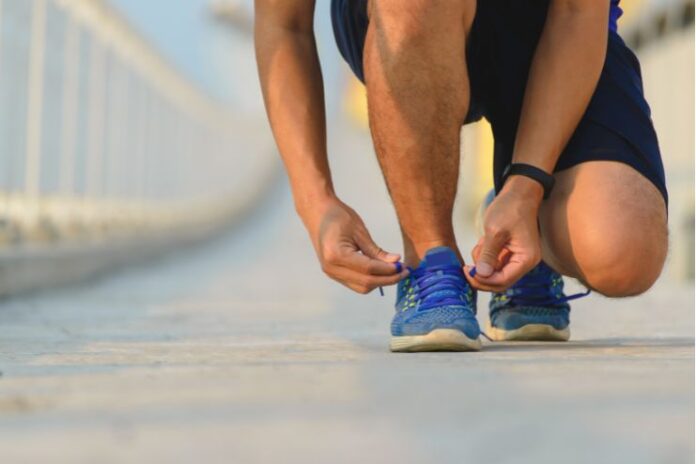Affiliate Disclaimer
Some links in this article are affiliate links. We may earn a small commission if you make a purchase through these links, at no extra cost to you. We only recommend products we find useful to our readersHave you ever thought about whether your shoes are actually causing you more harm than benefit? Barefoot running is gaining popularity as individuals seek to run more naturally and remain injury-free.
While traditional running shoes encase your feet, barefoot running shoes are built to allow your feet to move naturally—the way they were created to. The thin soles, yielding material, and minimal cushioning allow your feet to build up strength, gain balance, and remain in contact with the ground.
Such shoes facilitate proper posture and promote natural running gait, which could lower injury risks. Whether you’re an experienced runner looking to mix things up, a trail runner who wants more ground sensation, or someone interested in transitioning from bulky, padded shoes, barefoot running shoes may be your solution.
This article will cover the best barefoot running shoes to train smarter and move better.
READ MORE: Cycling Vs. Running: Which One Burns More Calories?
Benefits of Barefoot Running Shoes
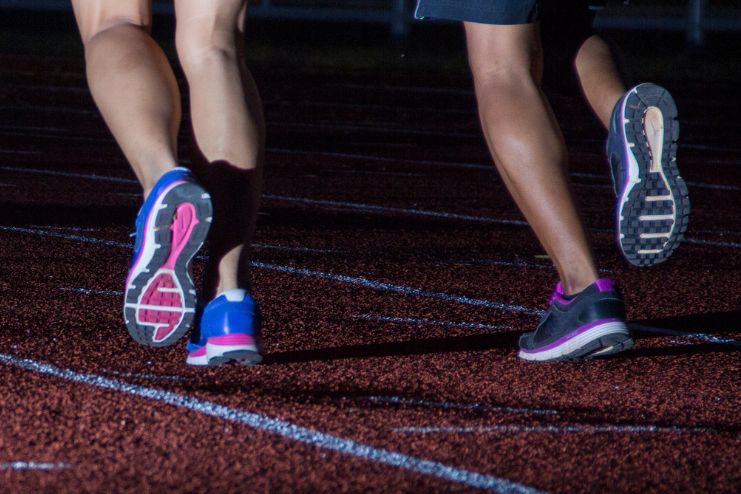
Barefoot running shoes provide more than a hip fashion statement—they encourage your body’s natural pace, reduce injury risk, and develop genuine strength.
From wanting flexible running shoes to injury-free running, these minimalist running shoes could be your next great stride.
Enhances Natural Foot Movement
Barefoot running shoes are made to allow your feet to move naturally. Unlike rigid and cushioned shoes, they give your feet more freedom and control.
- Encourages natural foot positioning and movement
- Strengthens small foot muscles often unused in cushioned shoes
- Improves balance, posture, and stability
- Let toes spread naturally for better grip and comfort
Reduces Impact Injuries
Wearing barefoot shoes is one of the primary reasons to change from traditional shoes. They foster a new way of running that is less stressful on joints.
- Encourages forefoot or midfoot striking instead of heel-first landings
- Spreads the impact more evenly across the foot
- Lowers stress on knees, shins, and heels
- Helps prevent common injuries like shin splints and joint pain
Improves Proprioception
Barefoot running shoes make you feel more grounded, enhancing your body’s awareness and control.
- Enhances ground feel and sensitivity
- Improves coordination and reaction time
- Helps you adjust better to different surfaces
- Builds more confidence in every step, especially on trails
Strengthens the Lower Body
Because barefoot shoes offer little support, your legs and feet have to work harder naturally, which makes you stronger in the long run.
- Activates muscles in the feet, ankles, and calves
- Strengthens arches and improves foot alignment
- Supports hip and core strength through better posture and movement
- Boosts overall performance in both running and daily activities
READ NEXT: Must-Have Items for Every Runner’s Arsenal
What to Look for in a Barefoot Running Shoe
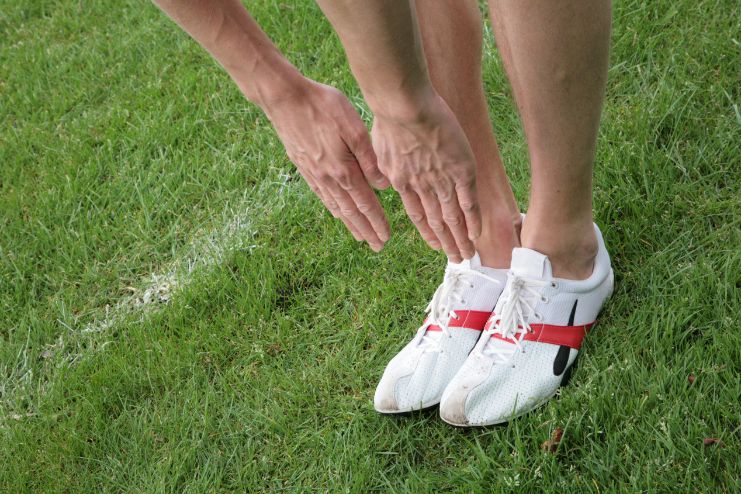
Choosing the right barefoot or zero-drop running shoes helps support your natural stride, improve strength, and make your runs smoother and safer, whether you’re on the road or the trail.
Minimal Cushioning & Zero-Drop Design
Barefoot shoes are often designed with minimal cushioning and a zero-drop running shoe structure, meaning the heel and toe sit at the same level. This encourages a more natural running stride by inviting a midfoot or forefoot strike rather than a heel-first touchdown.
It reduces the impact on your joints, improves your posture, and makes your legs and feet stronger. Zero-drop shoes replicate the manner in which your body is designed to move, providing the advantages of barefoot running while continuing to guard your feet.
Flexible Sole
One of the features of top minimalist running shoes is a bendable sole that will follow your foot. While stiff traditional soles don’t bend, a flexible barefoot shoe sole accommodates the natural movement of the foot and allows your foot to adjust to various surfaces.
This enhances your overall balance and tones muscles that normally are inactive in cushioned shoes, allowing you more control with each step.
Wide Toe Box
A wide toe box is another must-have feature in minimalist or barefoot shoes. It provides your toes with room to spread out and function naturally, enhancing balance and appropriate alignment.
If your toes become cramped, this can lead to discomfort or foot issues in the long run; however, minimalist shoes allow feet to move about freely and with greater comfort. Runners in narrow shoes generally experience an immediate improvement in stability as well as the freedom of toes.
Lightweight & Breathable Materials
Barefoot running shoes are designed to be as barefoot-like as possible. Therefore, the top minimalist running shoes are constructed of lightweight, breathable fabrics.
These materials maintain your feet’s coolness, dryness, and comfort—even on extremely long runs. The shoe’s lightness minimizes fatigue and promotes a sense of freedom while in motion.
Durability & Grip
Even minimalist shoes must be durable enough for everyday wear. A sturdy sole with good traction is particularly necessary for trail runners or those running on uneven terrain.
Opt for barefoot shoes made of robust yet flexible materials that shield your feet while still permitting natural movement. A good grip will keep you secure and stable, even on wet or rocky terrain.
READ MORE: Top Cross Training Shoes for High Arches
Top Barefoot Running Shoes for Injury-Free Training
Choosing the right barefoot running shoes can significantly enhance your training experience by promoting natural foot movement and reducing injury risk. Below is a selection of top barefoot running shoes tailored to various needs:
A. Best Overall Barefoot Running Shoe
Vibram FiveFingers V-Train
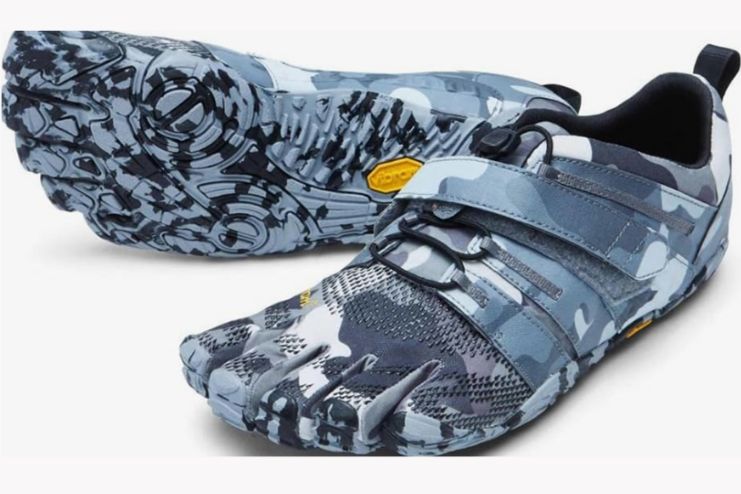
The Vibram FiveFingers V-Train is a favorite among runners and athletes who prefer the feel of being barefoot but with extra grip and support. The shoe has a tough sole with great traction—perfect for indoor training, road running, or light trail conditioning. With a secure fit and protective upper, the V-Train combines minimalism with the proper structure for dynamic movement and injury-free training.
B. Best for Road Running
Xero Shoes Zelen
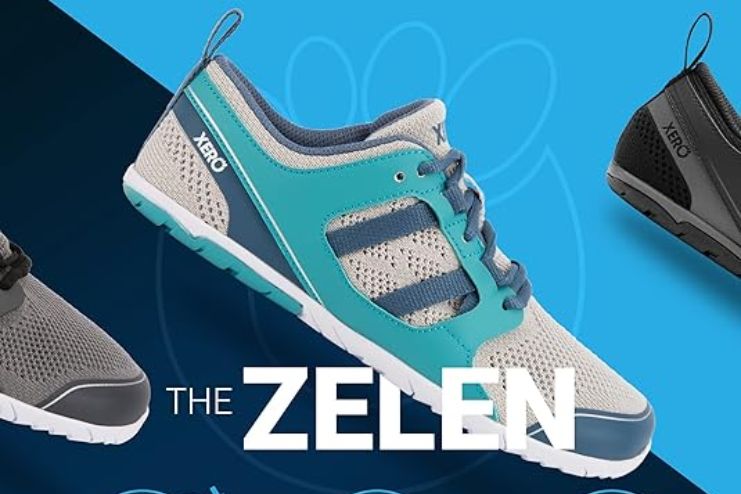
The Xero Shoes Zelen is a reliable choice for pavement pounding and long-distance runs. This lightweight, breathable shoe features a thin sole with excellent ground grip, ideal for improving foot strength and posture. It’s a top pick for those seeking natural foot movement on hard surfaces.
C. Best for Trail Running
Merrell Men’s Vapor Glove 6 Sneaker
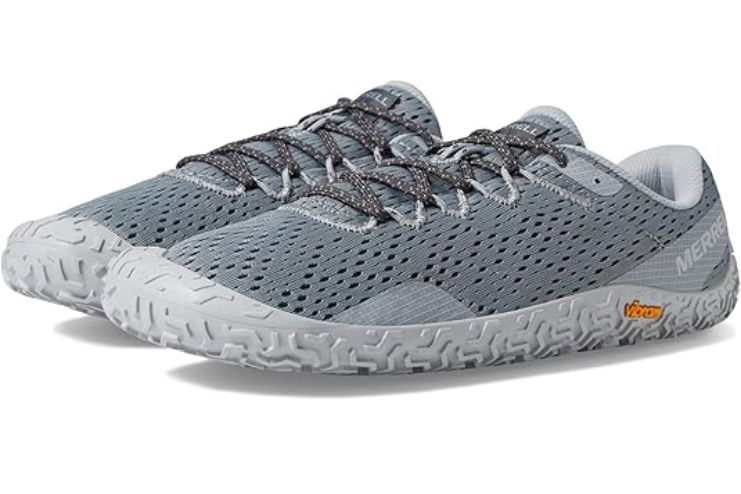
The Merrell Vapor Glove 6 is one of the best barefoot road-running shoes. With its minimalist design, it provides you with a close-to-ground experience while having just enough cushioning to make things nice and comfortable. The 100% recycled mesh upper is breathable and environmentally friendly, and the Merrell Air Cushion at the heel provides minimal shock absorption and stability.
D. Best for Beginners Transitioning to Barefoot Running
Topo Athletic ST-5
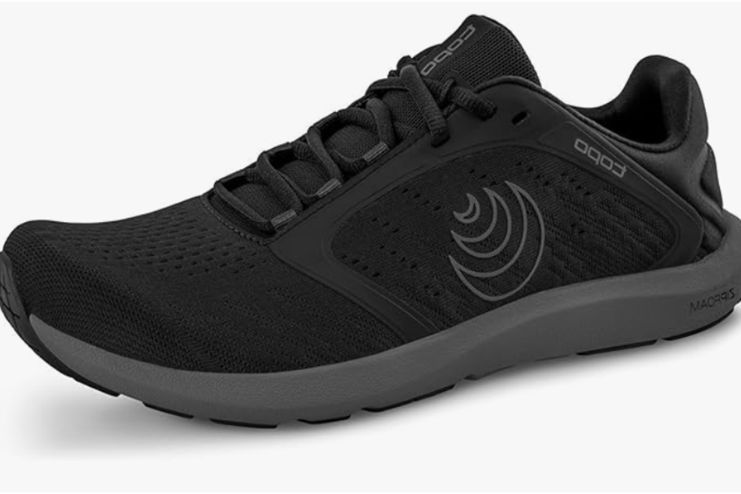
Topo Athletic ST-5 combines minimalist style with daily comfort. Its zero-drop platform and 14 mm stack height encourage natural running and enhanced ground contact. Lightweight and airy, it has a responsive cushioning ZipFoam midsole and a close-fitting recycled mesh upper—perfect for road running, gym training, or all-day wear with a natural feel.
E. Best Budget Barefoot Running Shoe
SAGUARO Men’s Barefoot Shoes
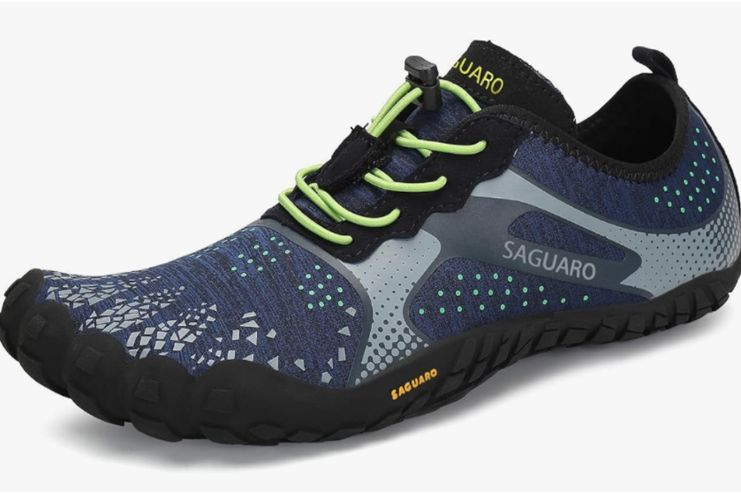
SAGUARO barefoot shoes feature a wide toe box for natural toe movement and a zero-drop sole that supports forefoot landing and muscle strength. Lightweight and breathable with a removable insole, they offer comfort and flexibility. The non-slip rubber sole adds grip and durability, making them ideal for running, training, hiking, and everyday wear.
How to Transition to Barefoot Running Shoes Safely
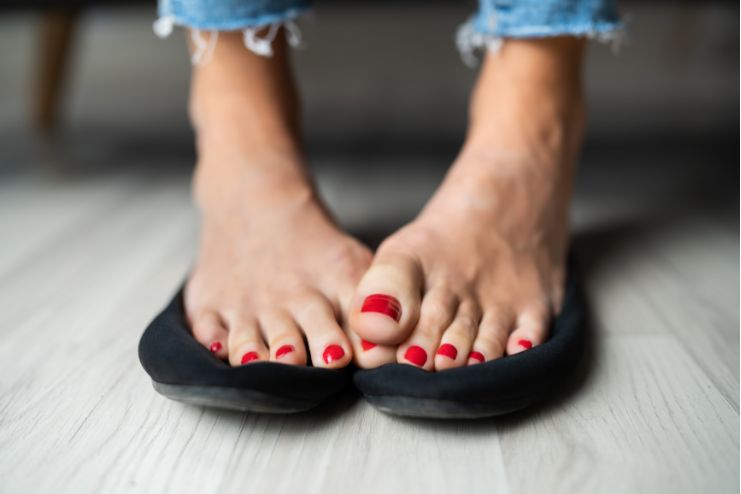
With proper technique, converting to barefoot or natural running shoes can improve strength, balance, and running form. Go slow, be consistent, and allow your body to adjust at its own rate for optimal results.
Start Slow
Converting to natural running shoes is a drastic change, so it’s necessary to transition slowly. These shoes don’t provide the additional cushioning and support you are accustomed to, so your joints and muscles require time to adapt.
Start with short runs or walks, and gradually increase the distance over a period of weeks. Improperly doing so will result in foot fatigue or calf strain, so do it step by step to not cause any harm.
Strengthen Your Feet
Because barefoot shoes engage muscles that other shoes do not, your feet and legs need to be strengthened. Basic exercises such as toe curls, single-leg balance exercises, and calf raises build stability and prepare your body for the rigors of barefoot running.
You can also walk barefoot on soft ground like grass or sand to slowly condition your feet. Stronger feet make the transition easier and safer over the long term.
Focus on Proper Form
One of the greatest advantages of barefoot running is improving your running form. Unlike conventional shoes, natural running shoes promote a midfoot or forefoot strike, which puts less stress on your joints.
To maximize them, emphasize shorter strides, keeping your posture upright, and lightly landing. Such form enables better movement and avoids overuse injuries. If you’re unsure, consider watching tutorials or getting feedback from a coach.
Listen to Your Body
During and after runs, observe how your body reacts. Mild soreness is common at first, especially in the calves or arches, but any sharp pain is a warning sign. Rest if needed, or switch back to your regular shoes until you’re ready.
Everyone adjusts at their own pace, so don’t rush the process. The goal is to enjoy injury-free running, not push through pain.
READ NEXT: Why Toe Strength Matters
Common Mistakes to Avoid When Using Barefoot Running Shoes
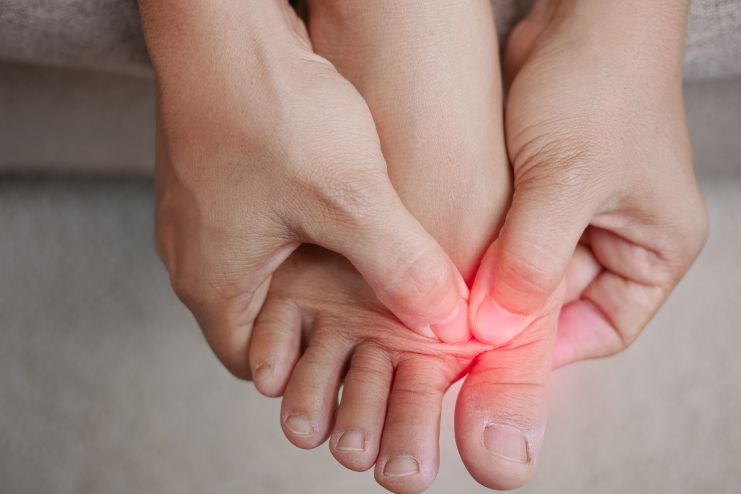
Barefoot running shoes—particularly wide toe box running shoes and road running barefoot shoes—can improve your running technique and foot health, but only when used properly.
Avoiding common pitfalls such as transitioning too fast, overstriding, or missing strength training will make your experience safer and more rewarding. Be patient, gradually build up, and heed your body to reap the best out of your barefoot experience.
Transitioning Too Quickly
One of the most frequent errors runners commit if they shift to barefoot shoes is changing too quickly. Barefoot shoes for road running are created to let your feet have more space and mobility, yet they also need your muscles, tendons, and joints to learn slowly.
Taking a sudden leap to long runs can cause ailments such as Achilles tendon strain, tight calf muscles, or even stress fractures. Instead, start with short walks or gentle jogs and gradually increase time and distance. This provides your body with the opportunity to adapt without being overwhelmed.
Overstriding
Another error that many first-time barefoot runners make is overstriding—long steps and heavy heel striking. This puts more stress on your joints and can create discomfort or injury. With barefoot shoes, you are better off making shorter, more rapid strides and landing softly on the midfoot.
This will encourage a more natural running technique and enhance posture. Whether on road running barefoot shoes or trail running, emphasizing good form will decrease impact and enable you to move more effectively.
Ignoring Foot Strength Training
When making the transition to minimalist footwear, many individuals forget that their feet will require strength in order to cope with the change. Wide toe box running shoes provide your toes with room to move freely, but freedom comes at the cost of having strong enough feet to hold up to your movement.
Omitting exercises such as toe curls, towel scrunches, calf raises, or balance drills will make the transition more difficult and heighten the risk of injury. Daily foot-strengthening exercises establish stability, prevent soreness, and condition your runs to be more comfortable over time.
READ MORE: 10 Things to Do Before and After a Workout
Conclusion
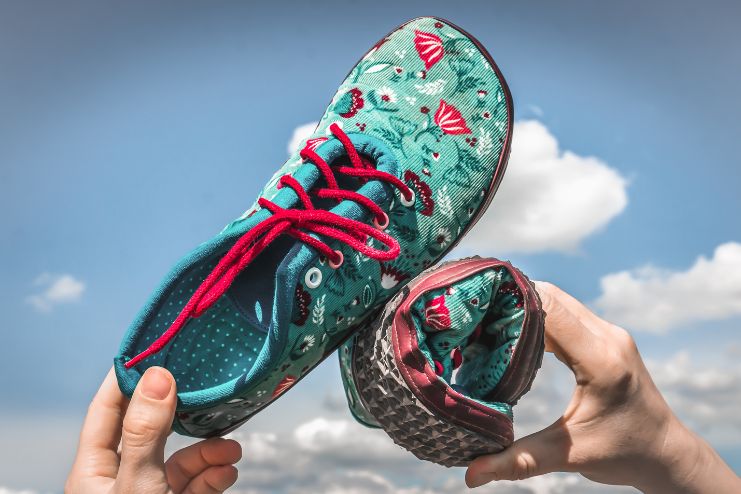
Barefoot running shoes are designed to assist your feet in propelling the way they’re intended to—free and unimpeded. Through natural foot function, they build strength in muscles, enhance balance, and reduce the risk of frequent running injuries.
Barefoot shoes are also said to help improve posture and running efficiency for many runners, resulting in a smoother and more connected ride on the road or trail.
Selecting the perfect pair depends on your running form, environment, degree of flexibility, and desired ground sense. Whether you are seeking zero-drop running shoes for everyday road running or something rugged for trail escapades, there is a barefoot option suitable for your purpose.
But it’s great to transition gradually. Let your feet get used to it, and work on strengthening them through easy exercises. Ready to give barefoot running a go? Begin slowly, be consistent, and experience the difference natural movement can bring.
References
- https://www.runnersworld.com/uk/gear/shoes/a61472209/barefoot-running-shoes/
- https://anyasreviews.com/10-best-barefoot-running-shoes-for-healthy-feet/
- https://www.wired.com/gallery/best-barefoot-shoes/
- https://runrepeat.com/guides/best-zero-drop-running-shoes
- https://edition.cnn.com/2020/06/03/health/barefoot-running-wellness-conversation-partner/index.html
- https://andune.in/blogs/news/top-10-health-benefits-of-barefoot-shoes
- https://www.vivobarefoot.com/uk/blog/benefits-of-barefoot-shoes
- https://www.nike.com/my/a/best-minimalist-running-shoes
- https://www.footic.com/about-barefoot/faqs/
- https://www.groundies.com/so-gelingt-dir-die-umstellung-auf-barfussschuhe/
- https://xeroshoes.com/barefoot-running-tips/do-not-transition-barefoot-slowly/
- https://www.rei.com/learn/expert-advice/basics-of-barefoot-minimalist-running.html
- https://www.exercisinghealth.net/blog/transitioning-safely-to-barefoot-running
- https://www.letzbarefoot.com/en/blog/post/running-in-barefoot-shoes-transition-mistakes-to-avoid-and-how-they-can-help-prevent-injuries_27.html
- https://xeroshoes.com/running/barefoot-blister/
- https://www.upstep.com/a/blog/are-barefoot-shoes-good-for-you
In this Article













